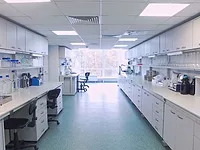Editor's View: Back to Basics
During the past few years, the excess capacity for the manufacture of powder and a slow growing economy have put pressure on the industry and attention has been focused on management and cost cutting. With some signs of better stability during the past few months, it looks like more attention can now be focused on the future and further expansion of the powder coating market.
Ken Kreeger, outgoing president of PCI, set the tone for the future by reminding the attendees of the five Es that were used to express the strong points of powder when PCI was first organized:
Economic - reduced energy cost, labor, waste disposal and environmental cost.
Environmental - no solvent, no sludge, simple permitting, easy compliance.
Efficiency - 100 percent solids, high first pass transfer efficiency, possible use of overspray.
Ease of Application - no mixing, one-coat application process.
Excellence of Finish - durable finish, good chemical resistance.
On a case-by-case basis, any coating material has to be compared on all levels, but in a general sense these properties do make powder very attractive when compared to certain competing technologies.
Some of the traditional obstacles to additional growth for powder have been successfully addressed in recent years. For example, color change times can be reduced to the point that they approach the same times as liquid spray systems. Very large and heavy parts can be successfully cured in ovens with precise control of the amount of energy used for the different masses. Powders can be designed for exceptional outdoor weathering.
Many products that are obvious good candidates for powder are using it now. Lawn and garden equipment, appliances, automotive parts and many general industrial categories are big users of powder. There is still significant growth potential, particularly in the area of architectural coatings. In Europe, the use of powder on architectural aluminum is much more popular than it is here in America. In September, we will publish an article on the subject of powder on architectural aluminum in North America.
Greg Bocchi, executive director of PCI, admitted that there are challenges to future growth, including fewer metal producers and manufacturers of consumer products in the United States, the rising cost of raw materials, and the continued trend of imports into the country. But he went on to say that, "With imagination and dedication, I believe they can be overcome." The people in attendance at the meeting were generally in agreement with Bocchi. The volume of powder sold did increase 6.5 percent from 2003 to 2004 among the 23 companies that report sales to PCI, so the optimism seems to have some foundation in fact. The numbers for 2005 so far show additional growth so we may be looking at a nice trend. At the upcoming Coating 2005 show (Indianapolis, September 19-22), the industry should get a good test of the potential for further growth in powder and how it compares to the other coating technologies. Further growth would be welcome news to the members of PCI.
Looking for a reprint of this article?
From high-res PDFs to custom plaques, order your copy today!




